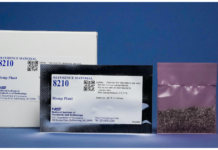Dull moments don’t exist in Maryland. Residents of the Old Bay State find excitement through innovation in music, business, technology, sports, politics, and beyond. Marylanders constantly seek evolution, which has influenced how the state approaches the cannabis industry.
Eight years into the development of Maryland’s robust medicinal market, nearly 70 percent of eligible residents voted to legalize recreational use among adults over the age of twenty-one. On July 1, 2023, the desire expressed in those ballots materialized in the launch of one of the most promising adult-use markets in the United States. From Baltimore to Silver Spring, regulators, operators, and observers across the Old Bay State are still developing an idea of how the market will mature, but data collected from the end of June through late July offers several valuable insights into what may lie ahead.
Before examining the early success of the adult-use market, let’s look closely at a trend that emerged within the medicinal market on June 30. The final day of medical-only sales in Maryland generated a 55.6-percent increase in retail sales compared to the average of the previous four Fridays. The average medical dispensary brought in an estimated $32,000 in retail sales on June 30, based on an observed increase of nearly 30 percent in transaction volume. Furthermore, the average transaction size and the average number of items per transaction increased by more than 10 percent.
There are several probable reasons sales increased so substantially, but the result is the same: Medical patients were aware of the coming onslaught of recreational customers and stocked up on their favorite products, possibly fearing their dispensaries of choice would run out when the general public suddenly had access to the merchandise.
They were wise to do this before the adult-use market launched. As mentioned, the average dispensary recorded nearly $32,000 in retail sales on June 30. One day later, Maryland dispensaries averaged nearly $50,000 in total sales on a single day. Average transaction volume was 275 percent higher on July 1 than on the four previous Saturdays. The rise in retail sales is even more remarkable considering many adult-use consumers didn’t benefit from the same discounts their medical-consumer counterparts enjoyed in previous weeks. The average discount on cannabis products in Maryland was slashed in half at the onset of adult-use sales, dropping from approximately 20 percent during June to roughly 10 percent during the first ten days of July. Despite this, the average cannabis retailer recorded a 252-percent sales increase at the launch of the adult-use market.
It is not out of the ordinary for sales to skyrocket when an adult-use market launches, but the product preferences of Marylanders turned out to be fairly unique. Compared to the first two weekends in June, flower, pre-rolls, and edibles increased their percentage share of total sales by 4 percent or more during the first two weekends in July. More specifically, flower products made up nearly 50.8 percent of sales in Maryland—twelve points higher than the national average. As a result, the percentage shares of total sales among vape pens, edibles, pre-rolls, concentrates, beverages, topicals, capsules, tinctures, and sublinguals fell below the average among adult-use markets across the U.S. It would benefit industry leaders in the state to remain cognizant of these trends as they determine which products to stock on their shelves.
Maryland’s adult-use market is seeing early success, but it’s still finding its identity and will face challenges along the road. Nevertheless, as in other states, the market won’t be defined by the challenges it faces but by how it responds to them. For example, Missouri launched its adult-use market earlier this year and already has surpassed Colorado in monthly sales despite a few early setbacks. Looking ahead, brands in the Show Me State must upgrade their production capacity to meet consumer demand.
Maryland operators can learn from the ups and downs of several other successful markets, including California, New Jersey, Nevada, and Connecticut. With the bounty of available knowledge and the leadership of the Maryland Cannabis Administration, the Old Bay State is fully capable of becoming an industry leader within the U.S. and around the world for years to come.











[…] Actually, one person recently told me we are drinking from Niagara Falls. You want to watch where the market is going today, but if we don’t have good systems and processes in place, we could get in a panic and make […]